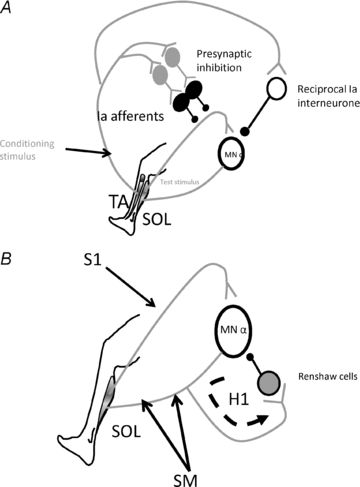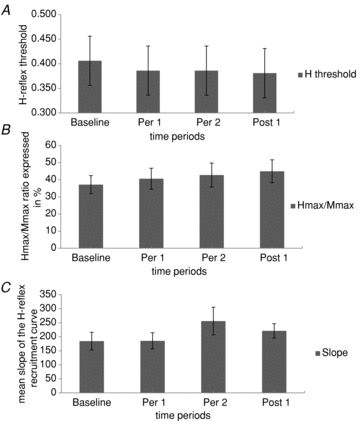Effects of anodal transcranial direct current stimulation over the leg motor area on lumbar spinal network excitability in healthy subjects
- PMID: 21502292
- PMCID: PMC3112557
- DOI: 10.1113/jphysiol.2011.205161
Effects of anodal transcranial direct current stimulation over the leg motor area on lumbar spinal network excitability in healthy subjects
Abstract
In recent years, two techniques have become available for the non-invasive stimulation of human motor cortex: transcranial magnetic stimulation (TMS) and transcranial direct current stimulation (tDCS). The effects of TMS and tDCS when applied over motor cortex should be considered with regard not only to cortical circuits but also to spinal motor circuits. The different modes of action and specificity of TMS and tDCS suggest that their effects on spinal network excitability may be different from that in the cortex. Until now, the effects of tDCS on lumbar spinal network excitability have never been studied. In this series of experiments, on healthy subjects, we studied the effects of anodal tDCS over the lower limb motor cortex on (i) reciprocal Ia inhibition projecting from the tibialis anterior muscle (TA) to the soleus (SOL), (ii) presynaptic inhibition of SOL Ia terminals, (iii) homonymous SOL recurrent inhibition, and (iv) SOL H-reflex recruitment curves. The results show that anodal tDCS decreases reciprocal Ia inhibition, increases recurrent inhibition and induces no modification of presynaptic inhibition of SOL Ia terminals and of SOL-H reflex recruitment curves. Our results indicate therefore that the effects of tDCS are the opposite of those previously described for TMS on spinal network excitability. They also indicate that anodal tDCS induces effects on spinal network excitability similar to those observed during co-contraction suggesting that anodal tDCS activates descending corticospinal projections mainly involved in co-contractions.
Figures






Comment in
-
Beyond the target area: remote effects of non-invasive brain stimulation in humans.J Physiol. 2011 Jul 1;589(Pt 13):3053-4. doi: 10.1113/jphysiol.2011.211599. J Physiol. 2011. PMID: 21724583 Free PMC article. No abstract available.
References
-
- Baret M, Katz R, Lamy JC, Pénicaud A, Wargon I. Evidence for recurrent inhibition of reciprocal inhibition from soleus to Tibialis anterior in man. Exp Brain Res. 2003;152:133–136. - PubMed
Publication types
MeSH terms
LinkOut - more resources
Full Text Sources
Medical

